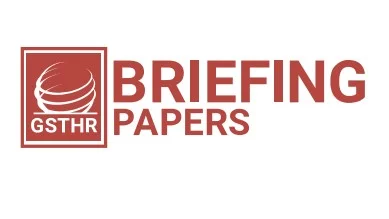- Estimates suggest as many as 85% of homeless people smoke in the UK, approximately seven times the national rate;
- Smoking contributes to the shocking disparity in the life expectancy of UK homeless people, who die at roughly half the age of the general population;
- More research is needed, but interventions delivered under the emergency COVID-19 response show tobacco harm reduction could offer significant benefits for homeless people.
A new Briefing Paper from the Global State of Tobacco Harm Reduction (GSTHR), a project from UK-based public health agency Knowledge·Action·Change (K·A·C), examines the significant potential of the approach to help people experiencing homelessness. ‘Tobacco harm reduction and people experiencing homelessness – a UK perspective’ discusses the impact of high smoking rates on homeless people’s lives, health and engagement with support services, and provides insights into harm reduction initiatives in three UK cities during the COVID-19 pandemic.
Surveys consistently estimate that between 76 – 85% of UK homeless people smoke, six or seven times the smoking prevalence seen in the general population, now at an historic low of 12.9%. On average, UK homeless men die at 44 years of age, compared to 76 in the general population and women at 42 years old, compared to 81. While not solely due to smoking, the high smoking rates in this population are a significant contributing factor to this shocking disparity.
Poor respiratory health is a particular concern among people experiencing homelessness. Chest infections, pneumonia and breathlessness requiring hospital admission are common, as are unmanaged chronic diseases like COPD, asthma and cardiovascular problems. All may be either caused or worsened by tobacco smoking. One study estimated that homeless people attend A&E departments 60 times more than the general population.
People who are homeless also often smoke in ways that further increase the risks to their health: smoking heavily, sharing cigarettes, or smoking discarded cigarettes. Alongside dependency on nicotine, people experiencing homelessness cite the stress and boredom of their situation as reasons why they continue smoking – but a survey found that 50% would like to quit, a rate similar to people who smoke in the general population (60%).
Tobacco harm reduction helps people quit smoking by giving them the choice to switch to safer nicotine products. A 2019 study found that at least two thirds of rough sleepers who smoked would be willing to switch to vaping if a device was freely available, and would take up smoking cessation support offered at their homelessness service. Small-scale, local initiatives were already underway but in 2020, the pandemic proved a catalyst for wider activity, as ‘Everyone In’ saw many thousands of homeless people temporarily housed.
Tobacco harm reduction initiatives developed in London, Manchester and Edinburgh, the majority of which saw the provision of free vape starter kits to homeless people, many of whom were living in hotels. As well as the longer term health improvements offered by switching, there were also more immediate benefits; COVID-19 infection risks associated with sharing or smoking discarded cigarettes were reduced, along with the risk of eviction by breaking no smoking policies, and the risk of breaking lockdown to go out and purchase - or look for discarded - cigarettes.
A major research study is currently underway which will compare the provision of vape starter kits in homelessness services with normal smoking cessation pathways, but in the meantime, much can be learned from the positive evidence gained from tobacco harm reduction for homeless populations under COVID-19. While based on UK evidence, it is hoped the Briefing Paper’s findings will be of interest to health and homelessness professionals in other countries, with translations available in French, Portuguese, Russian, Spanish and Chinese (Mandarin).
David MacKintosh, a Director of K·A·C which runs the Global State of Tobacco Harm Reduction project, commented:
“Homeless populations have long been disproportionately impacted by smoking, and therefore stand to gain enormously from effective and pragmatic harm reduction routes to quitting tobacco. The sustainability of this type of intervention must be approached carefully, but there is real potential here and it should be explored. On average, homeless people in the UK live half a life compared to the general population. Reducing their high rates of smoking is one way to start addressing this tragedy.”
ENDS
Notes to editors
References for all data used in the press release can be found in the full Briefing Paper, Tobacco harm reduction and people experiencing homelessness – a UK perspective.
About us: Knowledge·Action·Change (K·A·C) promotes harm reduction as a key public health strategy grounded in human rights. The team has decades of experience of harm reduction work in drug use, HIV, smoking, sexual health, and prisons. K·A·C runs the Global State of Tobacco Harm Reduction (GSTHR) which maps the development of tobacco harm reduction and the use, availability and regulatory responses to safer nicotine products, as well as smoking prevalence and related mortality, in over 200 countries and regions around the world. For all publications and live data, visit https://gsthr.org
Our funding: The GSTHR project is produced with the help of a grant from the Foundation for a Smoke-Free World, an independent, US non profit 501(c)(3) which, under US law, must operate independently of its donors. The project and its outputs are, under the terms of the grant agreement, editorially independent of the Foundation.

